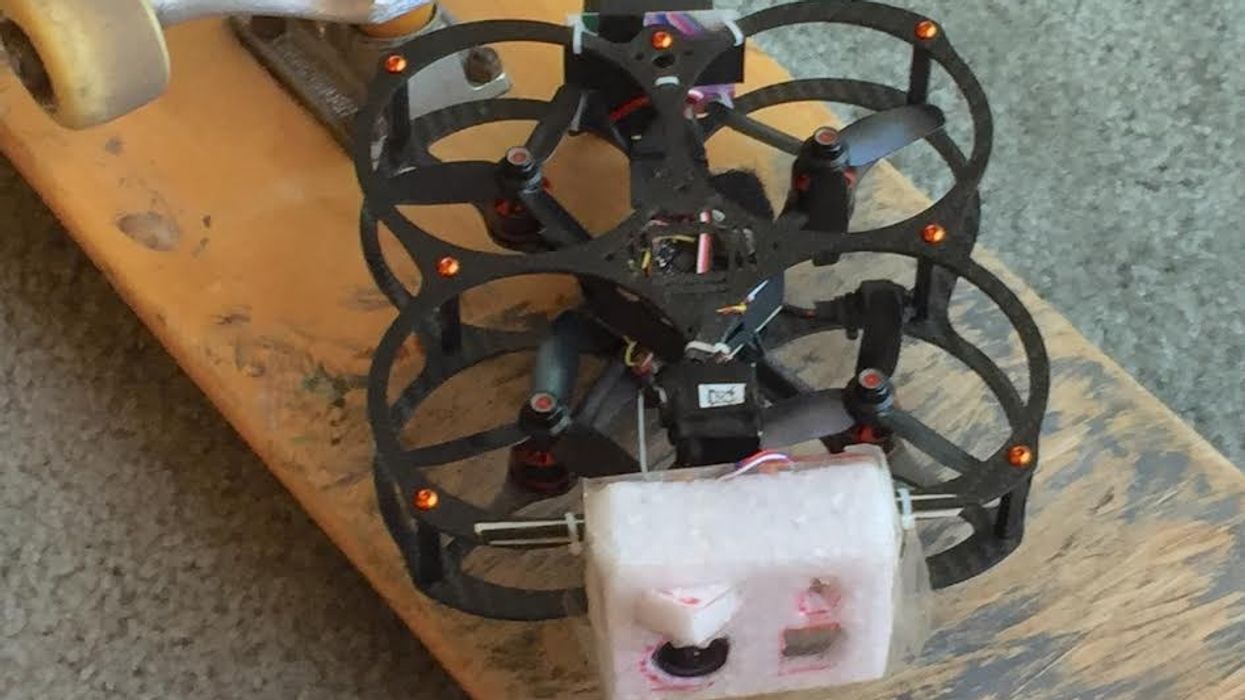Even a GoPro Was Too Heavy for This Tiny Drone
In order to create a drone that could fly straight through the main triangle of a bicycle, Robert McIntosh had to strip parts off the tiny GoPro Hero 4—here's how.

Why build a drone so small it can fit with ease through railings or the main triangle of a bicycle frame? Why not?
In the short video clip, the drone manages to fly through a bunch of impressively small holes. To obtain such challenging footage, McIntosh started with a micro quad copter with a simple servo for camera tilt; any pan would be achieved by rotating the drone, not the camera head. The filmmaker then stripped an already small GoPro Hero 4 Black of it's "unnecessary" parts, which in this case included its protective case, and stuffed the camera into an ultralight styrofoam shell, resulting in a 24g weight savings off the original 88g weight.

In an especially cool move on the filmmaker's part, he has released the pre-stabilized video.
While there are many pre/post stabilization pairs on the web, especially in tutorials, they are generally short, and it's really nice to see filmmakers who are open enough to share the entire shot for others to get a real context for what the raw footage looks like and how far it was taken in post in order to achieve the amazing final result. While the footage requires more post processing than you might get from something like the DJI Inspire 2, you also can't fit most professional drones through that tiny cement hole, and for certain shots, this method could be a real life saver. We are looking forward to seeing some indoor footage with the rig navigating complicated interior spaces soon.










![Ethos, Pathos, Logos: 20 Effective Ways to Advertise [Infographic]](https://nofilmschool.com/media-library/ethos-pathos-logos-20-effective-ways-to-advertise-infographic.jpg?id=34064614&width=600&height=600&quality=90&coordinates=560%2C0%2C0%2C0)

